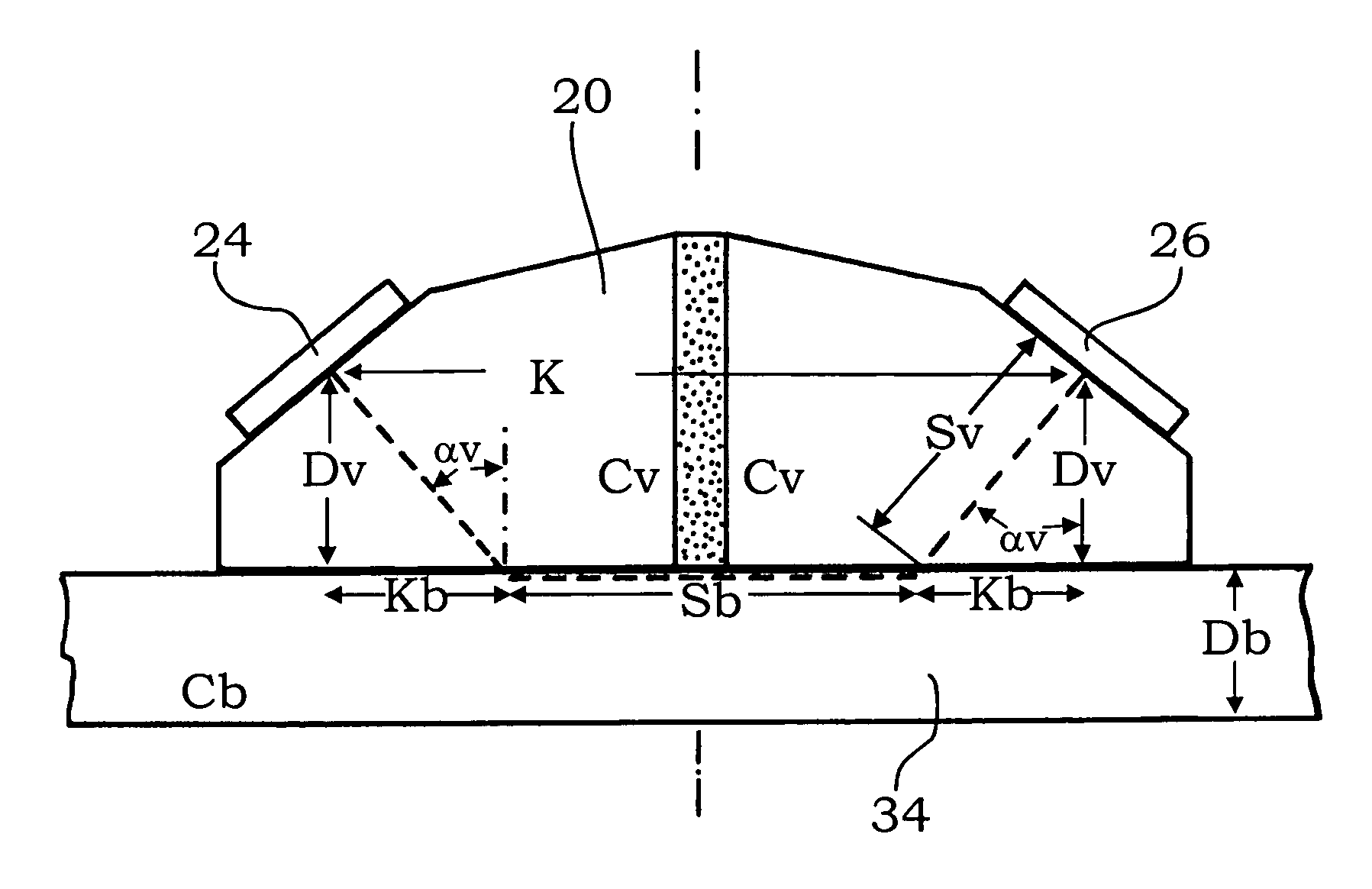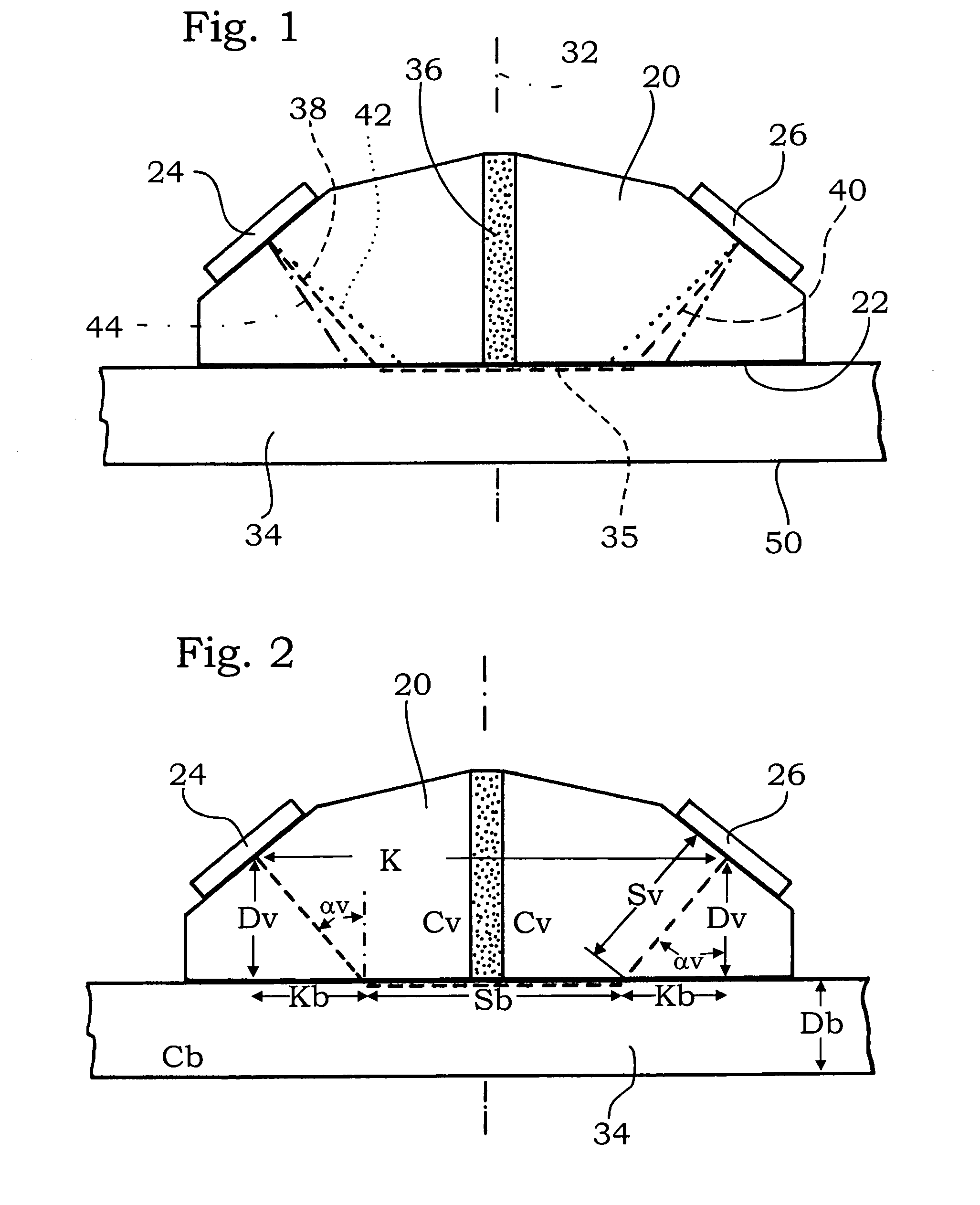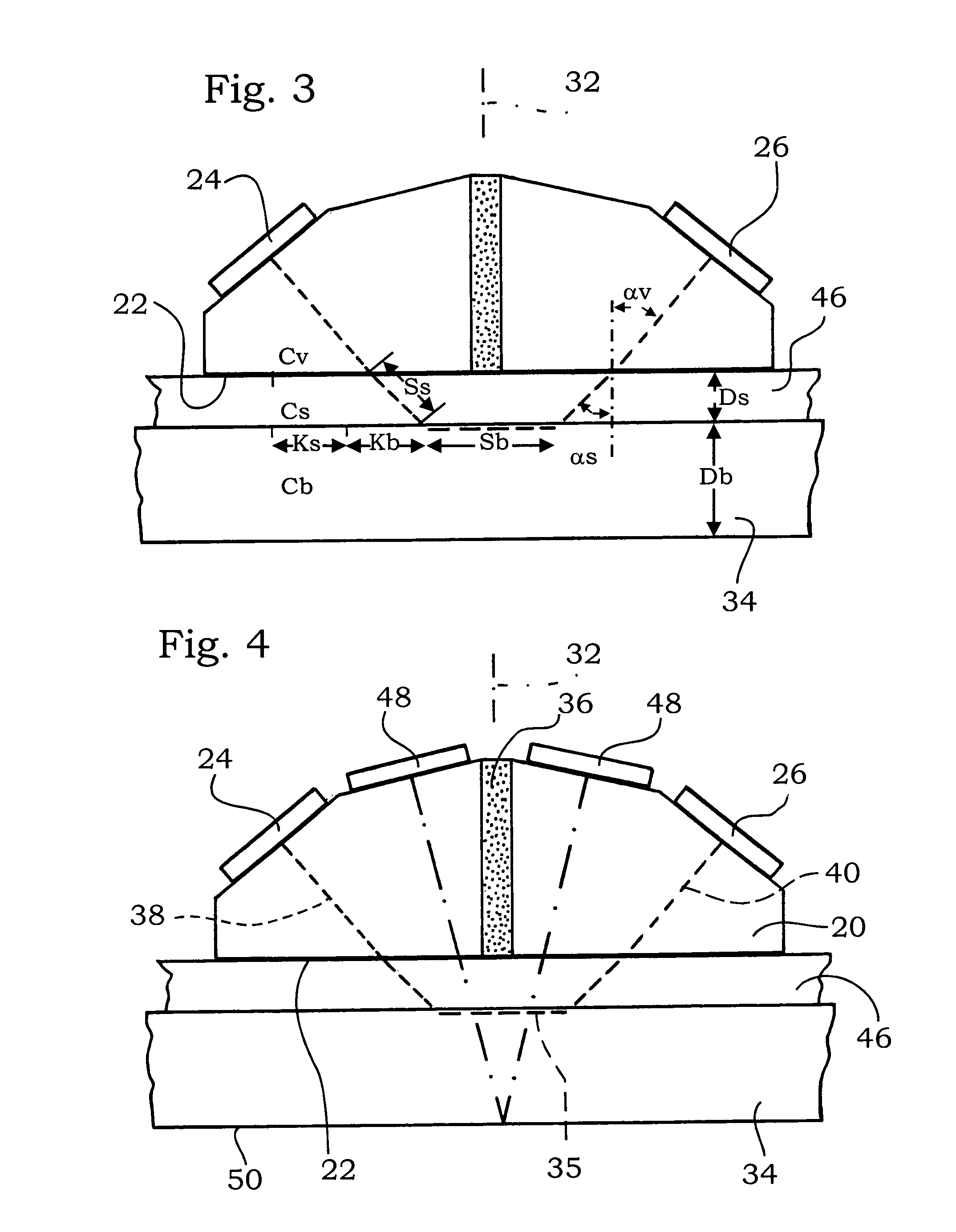Method for determining the sound velocity in a basic material, particularly for measuring the thickness of a wall
- Summary
- Abstract
- Description
- Claims
- Application Information
AI Technical Summary
Benefits of technology
Problems solved by technology
Method used
Image
Examples
Embodiment Construction
[0015]The probe shown in FIG. 1 has a specially shaped, substantially prismatic precursor body 20. It has a level coupling surface 22, which is also referred to as the active surface, and, on the opposite side thereof, bevels on which a transmit crystal 24 and a receive crystal 26 are respectively retained, more specifically cemented. The two crystals 24, 26 are built according to the same principle. They are disposed at an incline toward each other and also relative to the coupling surface 22. This arrangement will be discussed in further detail herein after.
[0016]A perpendicular bisector, meaning a line that perpendicularly bisects said crystal contact surface with the precursor body 20, is inclined at a certain angle relative to the coupling surface 22, said angle being (90°−αv) and being the same for the two crystals 24, 26. Further, the respective perpendicular bisectors lie in the same plane, namely in the plane of FIG. 1.
[0017]This may also be put another way: the two crystal...
PUM
 Login to View More
Login to View More Abstract
Description
Claims
Application Information
 Login to View More
Login to View More - R&D
- Intellectual Property
- Life Sciences
- Materials
- Tech Scout
- Unparalleled Data Quality
- Higher Quality Content
- 60% Fewer Hallucinations
Browse by: Latest US Patents, China's latest patents, Technical Efficacy Thesaurus, Application Domain, Technology Topic, Popular Technical Reports.
© 2025 PatSnap. All rights reserved.Legal|Privacy policy|Modern Slavery Act Transparency Statement|Sitemap|About US| Contact US: help@patsnap.com



